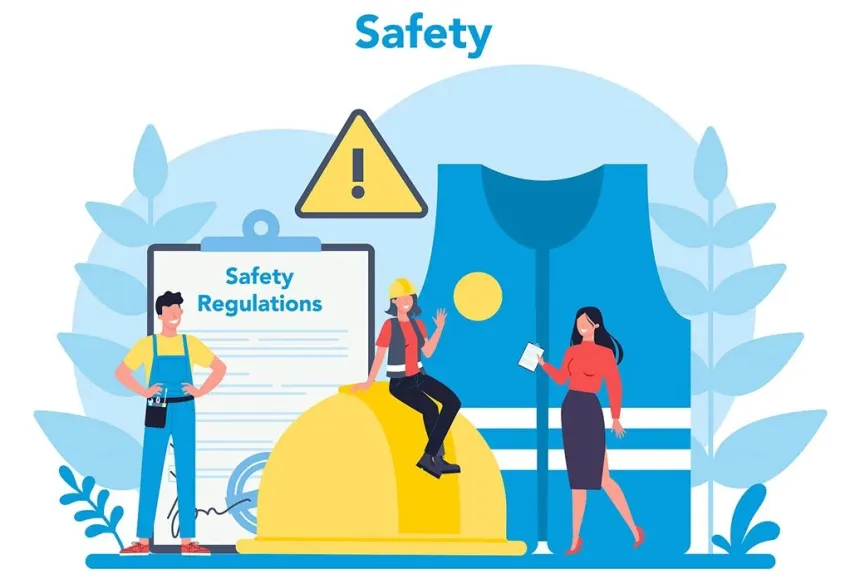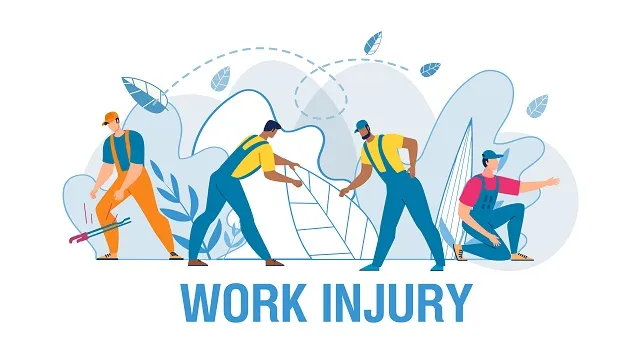
Menu

Menu

Many organizations define key productivity indicators (KPIs) to measure business performance, report achievements, and provide dashboard views for managers and executives. However, outside of high-risk industries, organizations rarely establish a well-defined set of KPIs related to health and safety. Even those that do often focus solely on measuring workplace accidents as their primary health and safety metric. Nevertheless, the ‘health’ aspect of this equation is equally important to consider.
While each organization has unique needs and priorities, several leading health and safety KPIs can serve as a starting point. It is important to note that some KPI measures are known as “leading indicators,” while others are “lagging indicators.” Leading indicators are proactive measures that can be assessed without an incident, accident, or property damage occurring. These indicators are useful for predicting and preventing future events, and they often relate to specific processes or targeted activities. In contrast, lagging indicators reflect the number and severity of incidents that have already occurred, essentially measuring failures in health and safety.
For example, leading indicators include audits, behaviors, inspections, and surveys. On the other hand, lagging indicators encompass lost time incidents, minor accidents, days lost, absence data, and property damage. By focusing on both leading and lagging indicators, organizations can create a more comprehensive approach to health and safety, ultimately fostering a safer workplace.

This indicator is classified as a “lagging” metric since it measures data after an incident or accident has occurred. As you analyze this metric, aim for a decrease in numbers expressed as a percentage of your employee base. If you observe a rise in these numbers, you can typically take corrective actions. For instance, consider changing environmental conditions, amending processes and regulations, or increasing awareness training. By proactively addressing these issues, you can enhance workplace safety and reduce the likelihood of future incidents.
This metric is a standard measure used to calculate the number of injuries incurred per million working hours. As a benchmark, it is commonly reported by health and safety bodies across various industry sectors, allowing you to compare your Lost-Time Injury Frequency Rate (LTIFR) with that of others. To calculate LTIFR, multiply the number of lost-time injuries by 1,000,000, then divide by the total number of hours worked in the organization. For example, if your organization has 10 lost-time injuries from 4 million hours worked, your LTIFR would be 2.5. This calculation helps identify areas for improvement and drives efforts to enhance workplace safety.

Calculating the percentage of productive days in your organization offers a more positive perspective on the impact of low sickness, injury, and accident rates. Depending on your company culture, this approach can effectively measure the same workplace dynamics. To perform this calculation, take the number of days worked as a percentage of the available working days. For example, if your organization has 100 employees and loses 50 days due to health and safety issues, you can calculate productivity as follows: 100 x 315 days = 31,500 days worked out of a possible 36,500 days. This results in a productivity percentage of (31,500/36,500) x 100 = 86%.
Furthermore, analyzing the causes of lost days can provide valuable insights. For instance, data analysis might reveal concerns about employee mental health and well-being or highlight emerging problems that could worsen over time. Examining the costs associated with lost days may prompt a budget review, leading to investments in health and well-being programs or support initiatives, such as offering gym memberships or recreational facilities in the workplace. Ultimately, this proactive approach fosters a healthier work environment and enhances overall productivity.
This measure requires careful definition since the targets depend heavily on the type of workplace. For example, an office environment may have two safety audits per year, while a forklift operation mandates an inspection before each use. Nevertheless, this metric emphasizes compliance with legislative requirements, and organizations should aim for 100% compliance with the established targets.
One key benefit of this leading indicator is its ability to visibly demonstrate to employees that the organization prioritizes health and safety. Consequently, by consistently achieving these targets, organizations not only fulfill legal obligations but also foster a culture of safety and responsibility among their workforce. This proactive approach ultimately enhances employee trust and engagement, reinforcing the organization’s commitment to maintaining a safe work environment.

Measuring the pass rate of employees undertaking training indicates the workforce’s level of awareness and preparedness regarding health and safety requirements. Additionally, another critical training metric for certain roles is the level of compliance with recurrent training. For example, in an airport environment, only individuals with valid licenses are authorized to work with dangerous goods. As a result, licenses must be renewed within a fixed period, necessitating careful scheduling of recurrent training and licensing to ensure operational continuity.
By monitoring both pass rates and compliance with recurrent training, organizations can effectively assess their employees’ readiness and commitment to safety protocols. This proactive approach not only enhances workplace safety but also minimizes the risk of incidents related to non-compliance.
Monitoring the average time taken to resolve hazards from the moment they are first reported is essential for maintaining a safe working environment. This practice creates confidence among employees and fosters a culture of health and safety awareness and reporting. Additionally, it enables you to pinpoint specific risk areas and implement preventative measures to avoid similar incidents in the future.
Moreover, you can expand this measure by tracking the number of incidents opened and closed within a given period, as well as the number of incidents closed within a target timeframe. By analyzing this data, organizations can identify trends, improve response times, and ultimately enhance overall safety performance. This proactive approach not only mitigates risks but also demonstrates the organization’s commitment to a safe workplace.
This metric is invaluable, especially in environments that involve dangerous equipment, specific safety issues such as contamination risks, and frequent shift work. By isolating incidents where workplace behaviors significantly impact health and safety, organizations can pinpoint underlying causes. This focused approach allows for targeted actions to change environmental factors and effectively mitigate risks. Consequently, implementing these measures not only enhances workplace safety but also promotes a culture of accountability among employees.

The main difference between an audit and an inspection lies in their execution. An inspection serves as a spot check at any given moment, while an audit is a formal, scheduled activity that occurs less frequently throughout the year and examines every aspect of a process. Additionally, external and impartial parties often conduct audits to ensure the process’s accuracy and thoroughness.
While workplace inspections effectively engage employees in monitoring health and safety, ensuring consistency and setting appropriate quality standards for all inspectors can be challenging.
Although the above KPIs are not an exhaustive list, selecting even a few that best apply to your organization will lead to a positive advancement in promoting health and safety in the workplace.
Creating a robust safety culture within an organization goes beyond merely implementing health and safety KPIs; it requires ongoing engagement and commitment from all employees. To foster this culture, organizations should prioritize regular training sessions that not only educate employees about safety protocols but also encourage open discussions about health and safety concerns. For instance, hosting workshops or safety briefings can empower employees to share their insights and experiences, thereby promoting collective ownership of workplace safety.
Additionally, organizations can implement recognition programs that reward employees who actively contribute to improving health and safety measures. By celebrating individual and team achievements in safety, companies reinforce the message that health and safety are integral to the organization’s values. Furthermore, such recognition can motivate others to engage in safe practices, creating a ripple effect throughout the workplace.
Another effective way to enhance health and safety in the workplace is through the adoption of technology. By utilizing digital tools and platforms, organizations can streamline their safety management processes. For example, software solutions can facilitate real-time reporting of incidents, hazards, and near misses, enabling quicker responses and more efficient tracking of safety performance metrics. Moreover, mobile applications can provide employees with easy access to safety information, training resources, and reporting functionalities, thereby fostering a proactive approach to health and safety.
Moreover, data analytics can play a crucial role in identifying trends and patterns related to workplace incidents. By analyzing this data, organizations can gain valuable insights into potential risk factors and areas for improvement. Consequently, informed decision-making becomes possible, allowing organizations to implement targeted interventions that address specific health and safety challenges.
Leadership plays a pivotal role in promoting a culture of health and safety. Therefore, organizations should ensure that leaders are not only committed to safety practices but also visibly demonstrate this commitment. For instance, leaders can participate in safety audits and inspections, showing employees that health and safety are top priorities. Additionally, regular communication from leadership about health and safety initiatives, achievements, and challenges can reinforce the importance of these efforts.
Furthermore, leaders can encourage employee involvement in safety committees or task forces, allowing staff to have a voice in shaping health and safety policies. By involving employees in decision-making processes, organizations foster a sense of accountability and shared responsibility, ultimately leading to a more engaged and safety-conscious workforce.
Finally, continuous improvement is essential for maintaining and enhancing workplace health and safety. Organizations should establish feedback loops that allow employees to share their observations and suggestions for safety improvements. Regularly soliciting feedback can help identify gaps in safety protocols and provide opportunities for enhancements.
Moreover, conducting post-incident reviews can offer valuable insights into the effectiveness of existing health and safety measures. By analyzing what went wrong and identifying contributing factors, organizations can refine their safety strategies to prevent similar incidents in the future. This commitment to learning and adapting not only improves safety outcomes but also demonstrates to employees that their well-being is a priority.
In addition to physical safety, organizations must recognize the importance of mental health and well-being in the workplace. Addressing mental health issues not only fosters a healthier work environment but also enhances overall employee productivity and morale. To promote mental well-being, organizations can implement various initiatives, such as providing access to mental health resources, offering employee assistance programs (EAPs), and encouraging open conversations about mental health.
Furthermore, creating a supportive environment where employees feel comfortable discussing their mental health challenges is crucial. For instance, regular check-ins by managers or designated mental health champions can help employees feel valued and supported. Additionally, incorporating stress management and resilience training into employee development programs can equip staff with tools to handle workplace pressures effectively.
As technology continues to advance, organizations can leverage innovative solutions to enhance workplace safety. For example, the use of wearable technology, such as safety vests equipped with sensors, can monitor environmental conditions and alert employees to potential hazards in real time. Similarly, implementing virtual reality (VR) training programs can provide employees with immersive experiences that simulate high-risk scenarios, allowing them to practice safety protocols in a controlled environment.
Moreover, utilizing drone technology for safety inspections can streamline the process, allowing organizations to identify potential risks in hard-to-reach areas. By embracing such technologies, organizations can improve their safety protocols and demonstrate a commitment to creating a safer workplace.
Effective emergency preparedness is another critical aspect of workplace health and safety. Organizations should develop comprehensive emergency response plans that outline procedures for various scenarios, such as natural disasters, fires, or workplace violence. Conducting regular drills can ensure that employees are familiar with these procedures and can respond quickly and effectively in the event of an emergency.
Additionally, organizations should invest in training employees on first aid and CPR. Having a knowledgeable workforce can make a significant difference during emergencies and can even save lives. By fostering a culture of preparedness, organizations can enhance their resilience and ability to respond to unforeseen incidents.
Employee engagement is vital for the success of health and safety programs. To foster engagement, organizations can involve employees in safety initiatives and decision-making processes. For example, establishing safety committees that include representatives from various departments allows employees to voice their concerns and contribute to developing safety policies.
Furthermore, organizations can encourage employees to participate in safety audits and inspections. By involving employees in these activities, they gain firsthand experience of the safety protocols and become more invested in promoting a safe workplace. Recognizing and rewarding employees for their contributions to health and safety can further enhance engagement and accountability.
To ensure the effectiveness of health and safety strategies, organizations should regularly evaluate their policies and procedures. This involves conducting audits, analyzing safety performance metrics, and soliciting employee feedback. By identifying areas for improvement, organizations can adapt their strategies to meet the evolving needs of their workforce and the challenges of the industry.
Moreover, staying informed about industry trends, regulatory changes, and emerging best practices is crucial for maintaining effective health and safety programs. By continually adapting to these changes, organizations can enhance their health and safety measures, ensuring a safer work environment for all employees.
Why not contact us at HRBluSky today to learn how we can help you better monitor your health and safety practices.
Alignment
Article
Audit
Automation
Benefits
Candidate
Communication
Compliance
Digitalisation
Digital Technology
Diversity
Emirates Id Application
Employee Experience
ESS
Feedback
Health and Safety
HRMS
HR Strategy
HR System UAE
Human Resource Management
Human Resource Management Systems
Job Roles
Learning and Development
Onboarding
Outsource
Payroll
Payroll Management System
Payroll Processing
Performance
Performance Management
Personalisation
Recruit
Recruiting
Recruitment
Remote Working
Rewards
Security
Service Providers
Skills
Smart
Survey
Virtual
Visa Cancellation
Work Environment
Workforce
© 2025 Pruvity HR Solutions Pvt Ltd, Madurai, India
WhatsApp us